Coronation 24 June 1488 House Stewart Name James IV | Role King | |
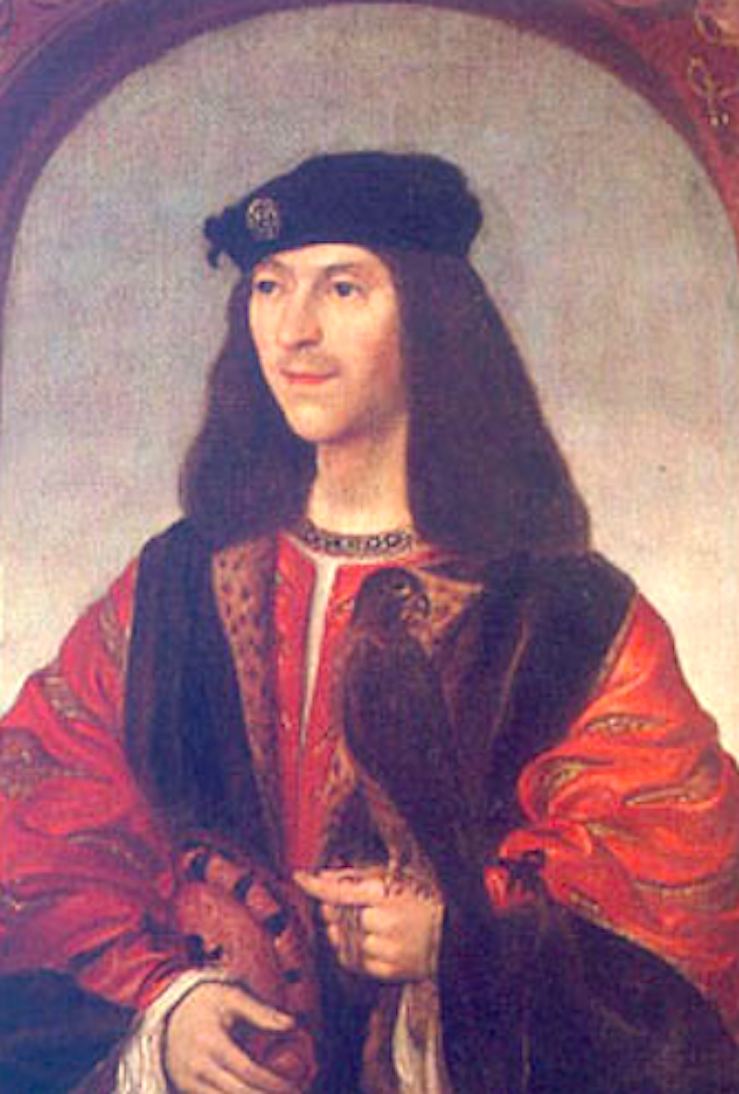 | ||
Reign 11 June 1488 – 9 September 1513 Children James V of Scotland, Lady Janet Stewart Parents James III of Scotland, Margaret of Denmark, Queen of Scotland Similar People James V of Scotland, Margaret Tudor, James III of Scotland, Henry VII of England, Mary - Queen of Scots | ||
James iv of scotland
James IV (17 March 1473 – 9 September 1513) was the King of Scotland from 11 June 1488 to his death. He assumed the throne following the death of his father, James III, in the Battle of Sauchieburn, a rebellion in which the younger James played an indirect role. He is generally regarded as the most successful of the Stewart monarchs of Scotland, but his reign ended in a disastrous defeat at the Battle of Flodden, where he became the last monarch not only from Scotland, but from all of Great Britain, to be killed in battle.
Contents
- James iv of scotland
- James IV of Scotland Dig It TV
- Early life
- Politics
- Culture
- Policy in the Highlands and Isles
- War and death
- Legends of the Kings resting place
- Marriage
- Illegitimate children
- Titles and styles
- Fictional portrayals
- References
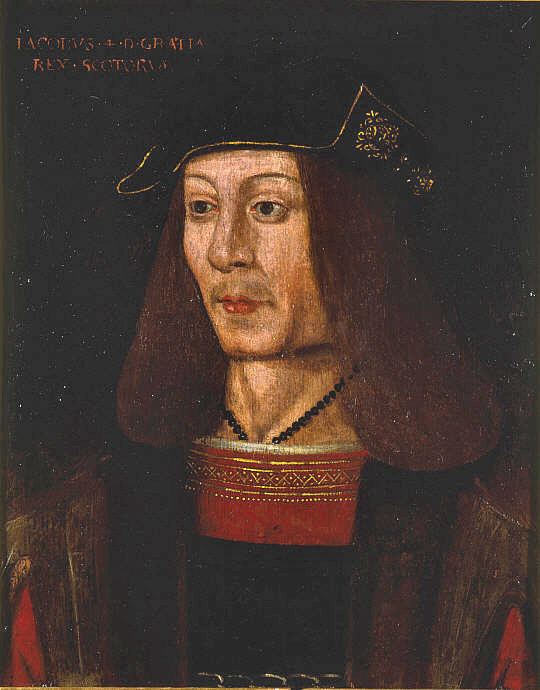
James IV of Scotland | Dig It! TV
Early life
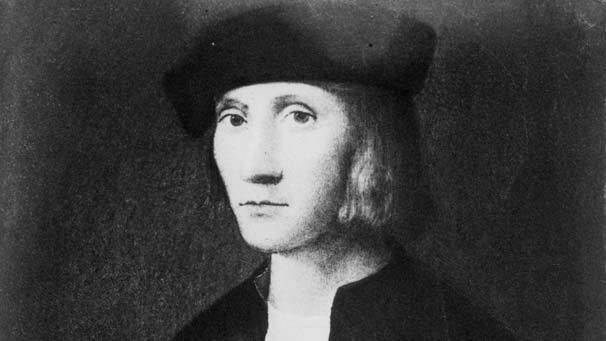
James was the son of James III and Margaret of Denmark, probably born in Stirling Castle. As heir apparent to the Scottish crown, he became Duke of Rothesay. In 1474, his father arranged his betrothal to Princess Cecily of England. His father was not a popular king and faced two major rebellions during his reign. The marriage negotiations and dowry payments led to the invasion of Scotland and capture of Berwick in 1482 by his uncle Alexander, Duke of Albany and Richard, Duke of Gloucester, while James remained at Stirling. James III's army rebelled against him and the English army reached Edinburgh.

During the second rebellion, the rebels set up the 15-year-old James as their nominal leader. They fought James III at the Battle of Sauchieburn on 11 June 1488, where the king was killed. The younger James took the throne and was crowned at Scone on 24 June. When he realised the indirect role which he had played in the death of his father, he decided to do penance for his sin. From then on, he wore a heavy iron chain cilice around his waist, next to the skin, each Lent as penance, adding extra ounces every year.
Politics

James IV quickly proved an effective ruler and a wise king. He defeated another rebellion in 1489, took a direct interest in the administration of justice and finally brought the Lord of the Isles under control in 1493. For a time, he supported Perkin Warbeck, pretender to the English throne, and carried out a brief invasion of England on his behalf in September 1496. Then in August 1497, James laid siege to Norham Castle, using his grandfather's bombard Mons Meg.
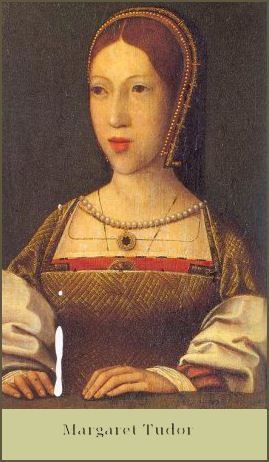
James recognised nonetheless that peace between Scotland and England was in the interest of both countries, and established good diplomatic relations with England, which was at that time emerging from a period of civil war. First he ratified the Treaty of Ayton in February 1498. Then, in 1502 James signed the Treaty of Perpetual Peace with Henry VII. He also maintained his relations with France. With rumours that James would renew the Auld alliance, in April 1508 Thomas Wolsey was sent to discuss Henry VII's concerns over this. Wolsey found "there was never a man worse welcome into Scotland than I, ... they keep their matters so secret here that the wives in the market know every cause of my coming."
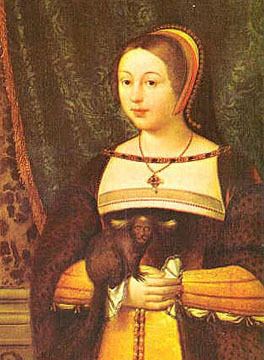
James saw the importance of building a fleet that could provide Scotland with a strong maritime presence. James founded two new dockyards for this purpose and acquired a total of 38 ships for the Royal Scots Navy, including the Margaret, and the carrack Michael or Great Michael. The latter, built at great expense at Newhaven and launched in 1511, was 240 feet (73 m) in length, weighed 1,000 tons and was, at that time, the largest ship in the world.
Culture
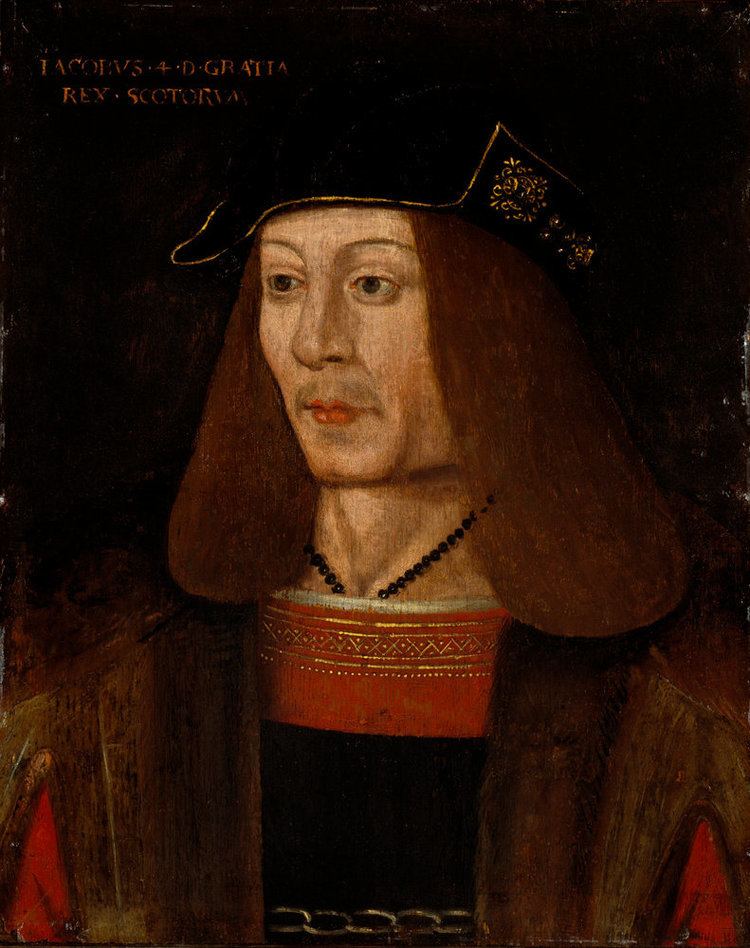
James IV was a true Renaissance prince with an interest in practical and scientific matters. He granted the Incorporation of Surgeons and Barbers of Edinburgh (later the Royal College of Surgeons of Edinburgh) a royal charter in 1506, turned Edinburgh Castle into one of Scotland's foremost gun foundries, and welcomed the establishment of Scotland's first printing press in 1507. He built a part of Falkland Palace, and Great Halls at Stirling and Edinburgh castles, and furnished his palaces with tapestries. James was a patron of the arts, including many literary figures, most notably the Scots makars whose diverse and socially observant works convey a vibrant and memorable picture of cultural life and intellectual concerns of the period. Figures associated with his court include William Dunbar, Walter Kennedy and Gavin Douglas, who made the first complete translation of Virgil's Aeneid in northern Europe. His reign also saw the passing of the makar Robert Henryson. He patronised music at Restalrig using rental money from the King's Wark.
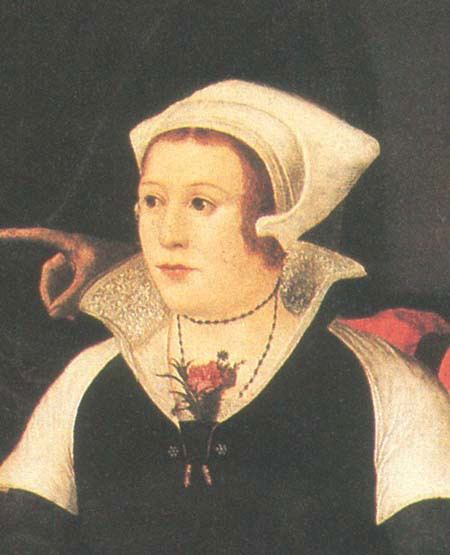
James was well educated and a fluent polyglot. In July 1498 the Spanish envoy Pedro de Ayala reported to Ferdinand and Isabella that
The King is 25 years and some months old. He is of noble stature, neither tall nor short, and as handsome in complexion and shape as a man can be. His address is very agreeable. He speaks the following foreign languages: Latin, very well; French, German, Flemish, Italian, and Spanish; Spanish as well as the Marquis, but he pronounces it more distinctly. He likes, very much, to receive Spanish letters. His own Scots language is as different from English as Aragonese from Castilian. The King speaks, besides, the language of the savages who live in some parts of Scotland and on the islands. It is as different from Scots as Biscayan is from Castilian. His knowledge of languages is wonderful. He is well read in the Bible and in some other devout books. He is a good historian. He has read many Latin and French histories, and profited by them, as he has a very good memory. He never cuts his hair or his beard. It becomes him very well.
James IV was the last King of Scots known to have spoken Scottish Gaelic. James is one of the rulers reported to have conducted a language deprivation experiment, sending two children to be raised by a mute woman alone on the island of Inchkeith, to determine if language was learned or innate. At Stirling Castle, James established an alchemy workshop where alchemist John Damian looked for ways to turn base metals into gold. The project consumed quantities of mercury, golden litharge, and tin. Damian also researched aviation and undertook a failed experiment to fly from the battlements of Stirling Castle.
Policy in the Highlands and Isles
In May 1493 John MacDonald, Lord of the Isles, was forfeited by the Parliament of Scotland. King James himself sailed to Dunstaffnage Castle, where the western chiefs made their submissions to him. John surrendered and was brought back as a pensioner to the royal court, then lived at Paisley Abbey. The Highlands and Islands now fell under direct royal control. John's grandson Domhnall Dubh (Donald Owre), one of the possible claimants to the Lordship, was peaceable, but the other, his nephew Alexander MacDonald of Lochalsh invaded Ross and was later killed on the island of Oronsay in 1497.
In October 1496 the Royal Council ordered that the clan chiefs in the region would be held responsible by the king for crimes of the islanders. This act for the governance of the region was unworkable, and after the Act of Revocation of 1498 undermined the chiefs' titles to their lands, resistance to Edinburgh rule was strengthened. James waited at Kilkerran Castle at Campbeltown Loch to regrant the chiefs' charters in the summer of 1498. Few of the chiefs turned up. At first, Archibald Campbell, 2nd Earl of Argyll was set to fill the power vacuum and enforce royal authority, but he met with limited success in a struggle with his brother-in-law, Torquil MacLeod of Lewis. Torquil was ordered to hand over Donald Dubh, heir to the lordship of the Isles, to James IV at Inverness in 1501. James waited, but Torquil never came.
After this defiance, Alexander Gordon, 3rd Earl of Huntly, was granted Torquil's lands. He raised an army in Lochaber and also cleared the tenants of that area, replacing them with his supporters. After the parliament of 1504, a royal fleet sailed north from Ayr to attack the Castle of Cairn-na-Burgh, west of Mull, where it is thought that Maclean of Duart had Donald Dubh in his keeping. As progress at the siege was slow, James sent Hans the royal gunner in Robert Barton's ship and then the Earl of Arran with provisions and more artillery. Cairn-na-Burgh was captured by June 1504 but Donald Dubh remained at liberty. In September 1507, Torquil MacLeod was besieged at Stornoway Castle on Lewis. Donald Dubh was captured and imprisoned for the rest of his life, and Torquil MacLeod died in exile in 1511. The Earl of Huntly was richly rewarded for his troubles, a price that James was prepared to pay.
War and death
When war broke out between England and France as a result of the Italian Wars, James found himself in a difficult position as an ally by treaty to both France and England. Henry VIII of England invaded France, and James reacted by declaring war on England.
James had already balked at the interdict of his kingdom by Pope Julius II, and he opposed its confirmation by Pope Leo X, so that he was not in a good position with the pontiff. Leo sent a letter to James, threatening him with ecclesiastical censure for breaking peace treaties, on 28 June 1513, and James was subsequently excommunicated by Cardinal Christopher Bainbridge.
James summoned sailors and sent the Scottish navy, including the Great Michael, to join the ships of Louis XII of France, so joining in the war of the League of Cambrai. Hoping to take advantage of Henry's absence at the siege of Thérouanne, he led an invading army southward into Northumbria, only to be killed, with many of his nobles and common soldiers, at the disastrous Battle of Flodden on 9 September 1513.
Both English and Scottish accounts of Flodden emphasise the King's determination to fight. In his otherwise flattering portrayal of James, Pedro de Ayala remarks on his ability as a military commander, portraying him as brusque and fearless on the battlefield:
He is courageous, even more so than a king should be. I am a good witness of it. I have seen him often undertake most dangerous things in the last wars. On such occasions he does not take the least care of himself. He is not a good captain, because he begins to fight before he has given his orders. He said to me that his subjects serve him with their persons and goods, in just and unjust quarrels, exactly as he likes, and that therefore he does not think it right to begin any warlike undertaking without being himself the first in danger. His deeds are as good as his words.
A body, thought to be that of James, was recovered from the battlefield and taken to London for burial. James had been excommunicated, and although Henry VIII had obtained a breve from the Pope on 29 November 1513 to have the King buried in consecrated ground at St. Paul's, the embalmed body lay unburied for many years at Sheen Priory in Surrey. The body was lost after the Reformation, which led to the demolition of the priory. John Stow claimed to have seen it, and said the king's head (with red hair) was removed by a glazier and eventually buried at St Michael Wood Street. The church was later demolished and the site redeveloped many times; it is now occupied by a public house. James's bloodstained coat was sent to Henry VIII (then on campaign in France) by his queen, Catherine of Aragon.
Erasmus provided an epitaph for the King in his Adagia. Later, in 1533, he wrote to James V of Scotland pointing out this essay on duty under the adage Spartam nactus es, hanc exorna (You who were born to Sparta shall serve her) on the subject of the Flodden campaign and the death of James and his son Alexander.
Legends of the King's resting place
However rumours persisted for many years that James had survived and had gone into exile, or his body was buried in Scotland, with no evidence to support them. Two castles in the Scottish Borders are claimed to be his resting place. These stories follow the legend that, prior to the Scots charge at Flodden, James had ripped off his royal surcoat to show his nobles that he was prepared to fight as an ordinary man at arms. What was reputed to be James IV's body recovered by the English did not have the iron chain round its waist. (Some historians claimed he removed his chain while "dallying" in Lady Heron's bedroom.) However, Border legend claimed that during the Battle of Flodden four Home horsemen or supernatural riders swept across the field snatching up the King's body as such a prize could not be allowed to fall into English hands after such a humiliating defeat, or that the King left the field alive and was killed soon afterwards. In the 18th century when the medieval well of Hume Castle was being cleared, the skeleton of a man with a chain round his waist was discovered in a side cave; but this skeleton has since disappeared. Another version of this tale has the skeleton discovered at Hume a few years after the battle and re-interred at Holyrood Abbey. Exactly the same story was told for Roxburgh Castle, the skeleton there discovered in the 17th century. Yet another tradition is the discovery of the royal body at Berry Moss, near Kelso. Fuelling these legends, Robert Lindsay of Pitscottie, writing in the 1570s, claimed that a convicted criminal offered to show Regent Albany the King's grave ten years after the battle, but Albany refused.
Marriage
His early betrothal to Cecily of England came to nothing, but interest in an English marriage remained.
In a ceremony at the altar of Glasgow Cathedral on 10 December 1502, James confirmed the Treaty of Perpetual Peace with Henry VII of England. By this treaty James married Henry's daughter Margaret Tudor. After a wedding by proxy in London, the marriage was confirmed in person on 8 August 1503 at Holyrood Abbey, Edinburgh. Their wedding was commemorated by the gift of a Book of Hours.
The union produced four children plus two stillbirths:
Illegitimate children
James also had several illegitimate children with four different mistresses; five of the children are known to have reached adulthood:
Titles and styles
Fictional portrayals
James IV has been depicted in historical novels and short stories. They include:
